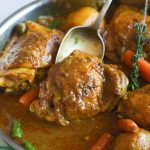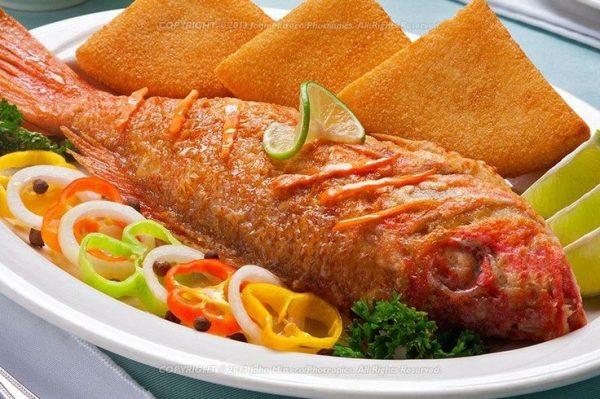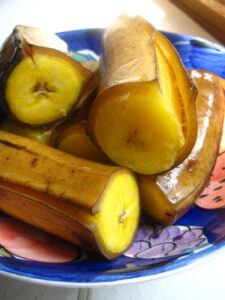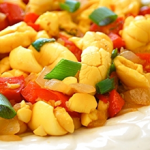They call it “The Goat”. Spicy and hearty curry goat with lots of flavor with a side serving of dumplin or fried plantains.
Part One: The Curry Chronicles: How Turmeric and Scotch Bonnet Became Best Friends
The marriage between turmeric’s earthy brightness and the scotch bonnet’s “fish peppers” fierce heat might seem like a natural pairing today, but it was the underlying foundation of pimento and indigenous seasoning wisdom that made this fusion possible.
Long before the first indentured workers arrived from India in 1845, Jamaica’s indigenous Arawak people had already mastered the art of transforming humble ingredients into extraordinary flavors. The Tainos were the native Indians of Jamaica, who lived a peaceful lifestyle that was changed in immeasurable ways when the Europeans arrived. They had their origins in the Arawak tribes of Eastern Venezuela, in an area called the Orinoco Delta. What many don’t realize is that when Indian curry powder met Jamaican kitchens, it wasn’t encountering virgin territory—it was joining a sophisticated indigenous spicing tradition that had been perfecting the balance of heat, aroma, and preservation for over a thousand years.
The secret lay in Jamaica’s native pimento, known globally as allspice, which is indigenous to the Western Hemisphere and was first discovered on the island of Jamaica.
ALL DAY…CURRY GOAT AT CARIBBEAN PARADISE RESTAURANT JAX
The indigenous people of Jamaica have historically been identified as the Taínos and Arawak, known by the Spanish as the “First People” of Ancient Xaymaca (land of the wood and water). Their language, diet and culture influence Jamaica to this day. The real secret ingredient in curry goat isn’t just the curry powder or the scotch bonnet—it’s the centuries-old indigenous wisdom that knew exactly how to make foreign spices feel at home.
Today in the United States, popular Caribbean spices include cloves, garlic, allspice, nutmeg and peppers, which are found in various forms throughout the sea coast islands and have become iconic ingredients in both classic Caribbean and modern Gullah Geechee dishes. The Taino diet was based heavily on what was available in their fertile surroundings. They cultivated yucca (also known as cassava), sweet potatoes, corn, and peanuts. But beyond their staple crops, the Arawak understood something profound about flavor layering.
“Jamaican curried goat is a dish usually eaten maybe twice a month on Sundays or for big celebrations and gatherings like parties, Christmas get-togethers or funerals.“
Allspice, also known as Jamaica pepper, myrtle pepper, pimenta, or pimento, is the dried unripe berry of Pimenta dioica, a midcanopy tree native to the Greater Antilles, and its flavor profile is often described as a combination of cinnamon, nutmeg, and cloves – hence its name. It offers a complex, warm aroma that is distinctive and highly prized in both sweet and savory dishes. This indigenous spice would later prove to be the perfect bridge between Indian curry traditions and Caribbean palates.
Drop by Caribbean Paradise Restaurant in Jacksonville, Florida, 900 Dunn Avenue, today for a taste of Caribbean spices! Our Jamaican curry goat carries within each spoonful this remarkable story of cultural resilience and fusion. Every time you taste our distinctive combination of Indian spices mellowed by Caribbean sweetness and ignited by scotch bonnet fire, you will experience a direct connection to both the African ancestors who carried their homeland’s flavors across oceans and the indigenous people whose sophisticated understanding of Jamaica’s native plants provided the foundation for one of the Caribbean’s most beloved dishes.
Part Two
Article by Jermyn Shannon






